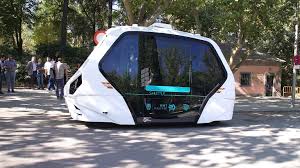
Imagine boarding a bus or train that navigates itself safely, efficiently, and on time, without a human driver. Driverless public transport is rapidly moving from pilot projects to real-world deployment, promising to transform urban mobility and reduce traffic-related problems worldwide.
1. What Is Driverless Public Transport?
Driverless public transport refers to autonomous vehicles that operate on pre-set routes or adapt dynamically using AI, sensors, and real-time traffic data. Key features include:
- Autonomous navigation: Vehicles use cameras, lidar, radar, and GPS to move safely.
- AI decision-making: Algorithms process traffic conditions, pedestrian movements, and obstacles.
- Passenger interaction: Touchscreens or apps allow passengers to plan trips, pay fares, and request stops.
- Safety protocols: Redundant systems prevent collisions and ensure operational reliability.
These innovations aim to improve efficiency, safety, and accessibility in urban transport systems.
2. Benefits of Driverless Public Transport
- Reduced traffic accidents: Autonomous systems eliminate human errors, a leading cause of collisions.
- Lower operational costs: Fewer drivers and optimized routes reduce expenses for public transit agencies.
- Increased efficiency: AI can dynamically adjust schedules to reduce wait times and congestion.
- Accessibility: Self-driving vehicles can serve areas poorly covered by traditional transport networks.
- Environmental impact: Autonomous electric vehicles reduce emissions and encourage sustainable commuting.
3. Real-World Examples
- Singapore: Autonomous buses are operating on public routes with limited human oversight.
- Stockholm and Helsinki: Pilot programs test self-driving shuttles for city commuters.
- United States: Several cities are trialing autonomous buses and shuttles for downtown areas and campuses.
These initiatives demonstrate that driverless public transport is feasible and increasingly reliable.
4. Challenges to Overcome
- Safety and trust: Passengers must feel secure trusting AI systems with their lives.
- Regulation: Cities must create laws and standards to manage autonomous vehicles on public roads.
- Technology limitations: Weather, complex traffic situations, and infrastructure variability remain challenges.
- Cybersecurity: Autonomous systems must be protected against hacking and operational sabotage.
5. The Future of Autonomous Public Transit
The next decade could see fully driverless metro lines, buses, and shuttles operating across major cities worldwide. Integration with smart traffic systems, AI-driven logistics, and real-time passenger data will make commuting faster, safer, and more environmentally friendly.
Long-term visions include:
- On-demand autonomous shuttles reducing personal car dependency.
- Seamless integration with urban planning for sustainable, smart cities.
- Fully autonomous freight and delivery services complementing passenger transport.
Final Thoughts
Driverless public transport represents a major leap in urban mobility, combining technology, safety, and efficiency. While challenges remain, autonomous systems have the potential to redefine how we navigate cities, reduce traffic accidents, and create greener, smarter urban environments.